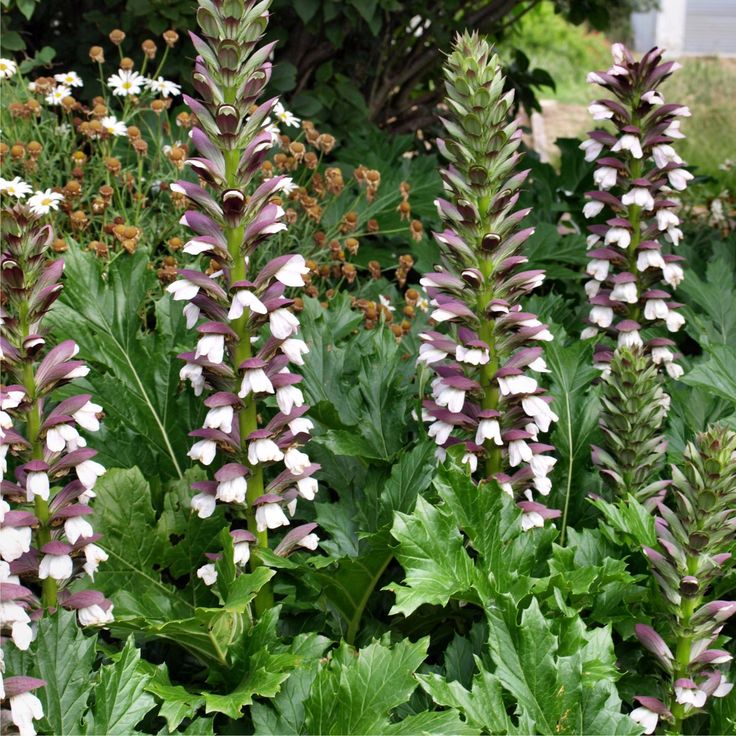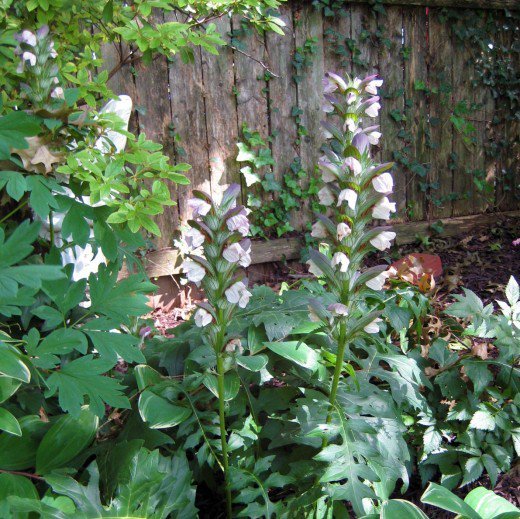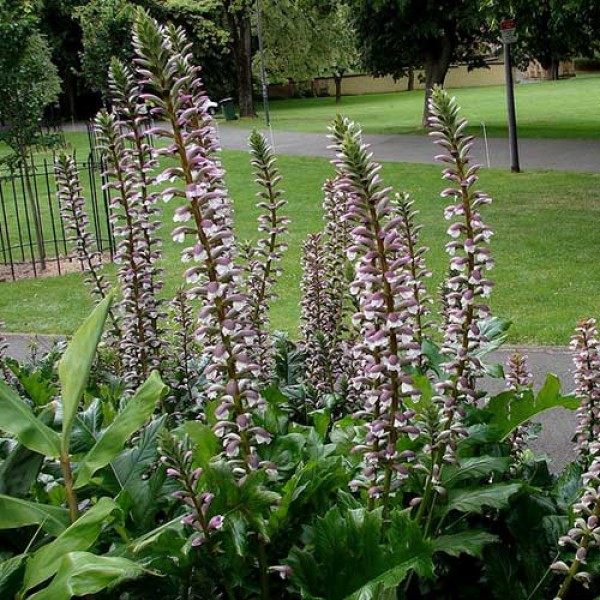RE: Oyster Plant - a highly regarded plant in Ancient Rome and Greece.

Acanthus mollis is a horticultural survivor from Ancient Greek and Roman times. Acanthus mollis is one of the great garden plants. It was so highly regarded in the ancient world that a motif shaped like an acanthus leaf was used to decorate the tops of Corinthian columns.
It's common name is Oyster plant and botanical name is Acanthus mollis.
An evergreen, soft wooded perennial which grows in an upright clump to about 1 metre × 1metre (3'×3'). The dark green, glossy leaves are lobed and toothed. Purple and white flowers apear on tall, erect spikes from November to January.

Acanthus will grow in most areas of Australia, excapt for inland zones.
Best look Foliage plant planted in shady areas or under deciduous trees container or indoor plant cut or dried flower arrangements.
Dramatic and long lasting spires of purple and white flowers grows in sun or shade handsome, deeply cut dark green leaves almost indestructible.
It's leaves are very attractive to slugs, snails and leaf-eating insects. The explosive pods scatter seed over a wide area and the plant will grow from any piece of roots, so acanthus can become a garden pest.
.jpg)
Acanthus can be grown in sun or part shade, and prefers a deep, moist soil, Mulch well, and never allow the plant to dry out. Snail bait is necessary, particularly in wet weather. Removes dead leaves and spent flower stems.